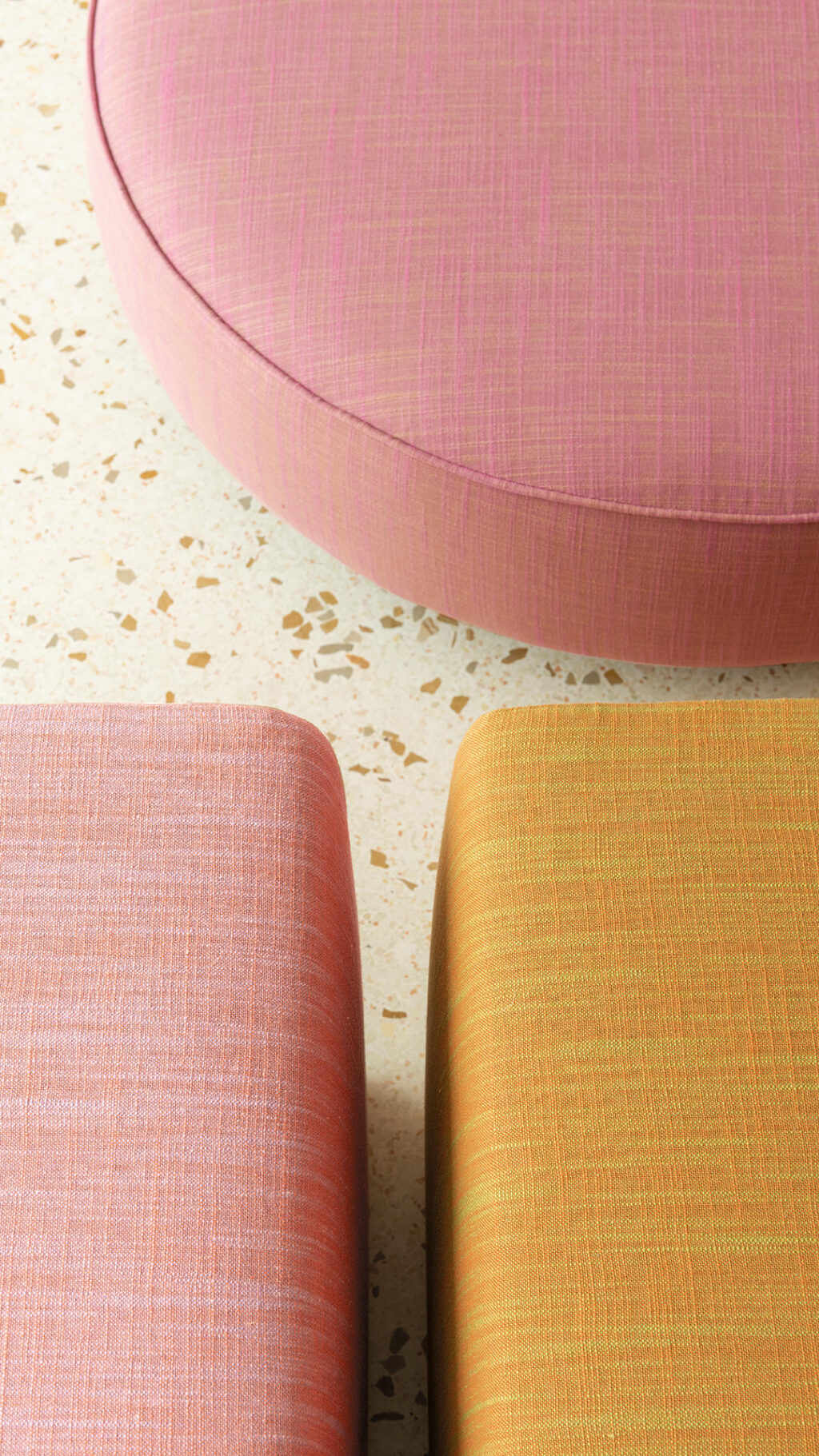What does “slub” or “slubbiness” mean for fabrics or textiles?
If you’ve ever shopped for furnishing fabric or even professionally in the contract textiles industry, you may have come across the term “slub”. Today we look at what this term means and how slubbed fabrics can affect the overall look and feel of an interior styling.
We also share some key examples of slubby fabrics from across FibreGuard fabric ranges: there’s such a variety of tactile texture and visual appearance that you’ll see how versatile slubbed fabrics truly are.
First thing’s first though: what is slub?
What is ‘slub’ in textiles?
Slub is a type of yarn that’s thickened in random areas of a finished fabric. Some yarns can be spun at increasing and decreasing levels of tension, and would be described as ‘slubby’.
There are two different ways of looking at slubs – on the one hand, they can be valued or deliberately produced for aesthetic effect.
On the other hand, they could be seen as a defect in the finished fabric, accidentally produced by either uneven spinning (like we mentioned above) or through using low-quality, bumpy or short-staple fibre. In fact, in the history of the textiles industry, slub fabric was generally seen as a mistake because of its unpredictable imperfections.
Related read: Answering your questions on flat weave vs textured décor fabrics >
Slubbed fabrics are perfectly imperfect
Well, when weavers intentionally add inconsistency to the look of their fabric by varying the thickness of their threads, they create slubbed fabrics. The result is a beautifully uneven texture and appearance (sometimes referred to as “slubbiness”) that usually adds warmth and comfort to whatever space it’s used in: think blankets, cushions or curtains just to name a few!
Slubbed fabrics have become very popular in interior decor and upholstery because they bring with them a sense of warmth and fun to a room. In fact, many people buy slubbed fabrics for this reason alone.
Related read: Style spotlight on bouclé yarn and FibreGuard fabrics >

This is a multipurpose FibreGuard fabric in a curtain model that showcases its slubbed effect

This is another multipurpose plain FibreGuard fabric, shown here in blinds that showcase its slubbed effect

Peek at textiles history: slubbed fabrics in fashion and furnishing
Slubbed fabric can be found throughout the world of textiles, from upholstery and other soft furnishing fabric to fashion. In fashion fabrics, linen and tweeds, for example, are often slubbed.
Donegal tweed is a lovely example from the world of fashion. It’s a coarse wool fabric traditionally handwoven in Co Donegal, in Ireland, and is usually found in a plain weave but sometimes also twill.
The most common colours are black and white woven to make a heathered earth tone, flecked here and there with little pops of colourful slubs.
The worlds of fashion and décor collided historically in fabrics like bourette and eri silk
Both bourette and eri silk have been used for clothes as well as furnishing textiles.
Bourette is a slubby fabric containing ‘bourette’ yarns made from silk waste, combined with other yarns.
It has the distinctively rough, ‘slubby’ surface combining multi-coloured threads and knots of spun silk.
Eri silk is made from the cocoons of the domesticated silkworm samia ricini, without harming the silkworm itself. Once the larvae have developed as moths and leave their cocoons, the cocoons themselves are spun into a woolly or even cottony kind of yarn to make silk. Eri silk itself has a coarse, fine texture, and is very dense, making it naturally strong and durable.
Some collections of FibreGuard’s furnishing fabrics are slubby too
This multipurpose plain fabric in our roomshot to the right is a beautiful illustration of the variety a slubbed yarn can give a finished fabric. It has a gorgeous construction with a natural, beautiful look & a strie - a striped design used especially in textiles that consists of faint streaked vertical lines of colour close in tone to the background (otherwise known as a strie).
Related read: Multipurpose fabrics: upholstery, drapery and beyond >

This close up of one of FibreGuard's textured upholstery fabrics features a bouclé yarn that’s base-dyed to give it a multicoloured effect

Sectional sofa in textured neutral upholstery, featuring a bouclé yarn that’s base-dyed to give it a multicoloured effect

Slubbing can be combined with other fabric characteristics, such as jacquard, as seen here. Read more about jacquard fabrics here.
Slub fabrics have a rich history and an exciting future in the furniture industry
It's clear that fabric slubbing is an important part of the history of textiles, and we can see how this has led textile designers to where we are today.
We've come a long way since ancient times when people first started making their own textiles. FibreGuard fabrics are more functional than ever before, and the best part is that they are still just as fun for our in-house textile designers to create!
Our furnishing fabrics are stain-resistant to ensure your peace of mind. It’s normal to be a little afraid of any accidental stains that might occur, but don’t worry.
GET IN TOUCH WITH US to learn more about our stain-resistant fabric ranges.